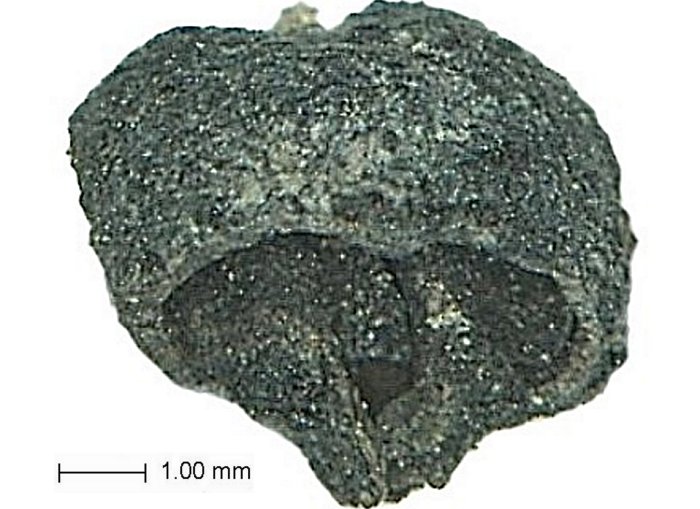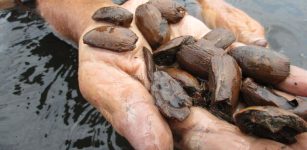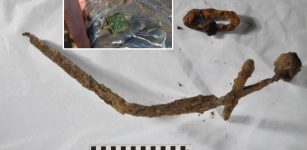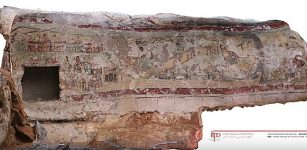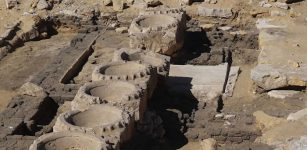A 3,500-Year-Old Grape Seed Sheds Light On Great Tradition Of Vineyards Of Anatolia’s Çal And Region
Conny Waters - AncientPages.com - Archaeological excavations conducted at the Aşağıseyit Mound site in western Anatolia's Denizli have revealed a 3,500-year-old grape seed.
In the excavations at Aşağıseyit Höyük, located in the Çal district, remains of a grape seed estimated to be 3,500 years old were discovered, Denizli, Türkiye, Sept. 8, 2023. (AA Photo)
The discovery is of great importance because it sheds light on the region's ancient viticulture and trade history. It will also significantly support tourism in the city of Çal - particularly known for its vineyards - and the entire region after the excavations are complete.
Turkey has a favorable area for viticulture, and it has a long history in the cradle of a great civilization. Çal has also its ancient traditions. Turkey is one of the top producers of grape; It has 468,792 hectares of vineyard area and production is approximately 4 million tons. The country ranks fifth in terms of growing area, after Spain, France, China, and Italy, and ranks sixth in production after China, Italy, USA, Spain, and France.
Turkey has about 7% of the world’s area of vineyards and produces 6.4% of the world’s grape production.
The remnants of a grape seed dating back 3,500 years have been discovered in a recent archaeological excavation at the Aşağıseyit Mound site in western Anatolia's Denizli.
Recent excavations in the Aşağıseyit neighborhood “started following surface surveys, which suggested human settlement in the area since the Copper Age. Led by associate professor Erim Konakçı from the Department of Archaeology at Izmir Democracy University, the team has been thoroughly working on the excavation project.
See also:
8,600-Year-Old Bone Needles Found In Denizli Closely Associated With Old Textile Tradition
Among the findings unveiled by the excavation team this year, the 3,500-year-old grape seed has garnered significant attention, writes Daily Sabah.
The area of the Aşağıseyit Mound site have been in use from the Chalcolithic period up to the Roman period, exhibiting a fortress-like structure, informed Konakçı in a press release.
In the excavations at Asagiseyit Höyük, located in the Çal district, remains of a grape seed estimated to be 3,500 years old were discovered, Denizli, Türkiye, Sept. 8, 2023. (AA Photo)
"We have reached layers dating back to as early as 1600 B.C. Surface surveys have already indicated that the history of this mound extends back to the late Chalcolithic period. Furthermore, we are aware of the existence of settlements during both the early and late Bronze Ages. We anticipate further exploration in the coming years to delve into these layers," said the researcher.
During the excavations, Konakçı also revealed the team had identified two phases dating to the Late Bronze Age, between the 12th and 16th centuries BC. Among unearthed structures are hearths, and ovens dated to these periods, and these findings have been evaluated by archaeozoologists and archaeobotanists.
"We have acquired data suggesting the consumption of barley and wheat,” said Konakçı regarding the plant species and seed types used during both the Hellenistic and Late Bronze Ages in the region.
“A single grape seed was found, providing new insights into grape consumption in the region around 1500 B.C. As you may know, there is a long history of grape cultivation and winemaking along the western coast of Anatolia and central Anatolia. We are aware of the crucial role grapes play in interregional trade. The discovery of a grape seed aligns with this broader historical context."
Çal has maintained its prominence not only in viticulture for centuries.
In fact, Denizli has a long history in textiles, and that many bone needles used in textiles were found at the excavation site, in a building, which was probably built in 6400 B.C.
Two years ago, 3,600 years old textile parts, products, and loom weights were found in Denizli during the archaeological excavations.
From ancient sources, it is known that in Antiquity, the wealth in Denizli region and its surroundings was associated with textiles and the trade developed around it. The province of Denizli owes its worldwide success today to its deep-rooted past of 2300 years.
The people of the valley had flourished in the antique world since the Hellenistic period (3rd Century B.C) and wool and silk were the primary sources of the raw material for the textile industry of the region.
Written by Conny Waters - AncientPages.com Staff Writer


